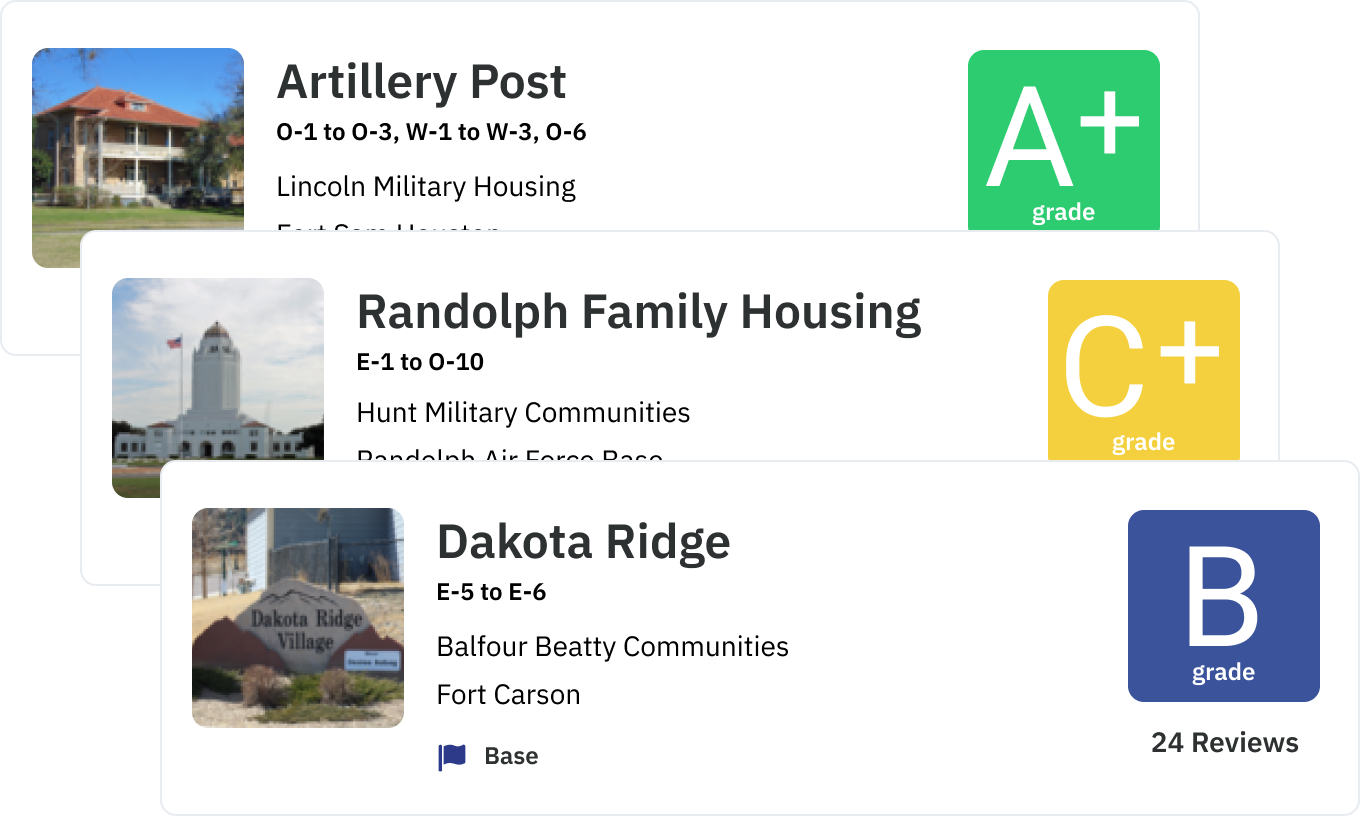Talent Marketplace and Military Orders
by Becca Stewart - January 13th, 2022

Military families know what it’s like to live with uncertainty, particularly when it comes to a PCS orders. Ranking possible locations, awaiting orders – it’s all stressful. We submit “dream sheets” to the Man Behind the Curtain, then twiddle our thumbs and hope for the best. However, what once was an ambiguous and secretive assignments process is gradually changing.
All branches are gradually rolling out new assignments systems modeled after “marketplace-style” civilian hiring websites that match talent with available jobs. These systems help hiring teams to assign roles based on the skill, career progression, and needs of individual service members.
The implementation process isn’t the same for every military branch. Currently, most branches are only using a marketplace-style system for officers. However, it appears this approach will eventually reach enlisted members, essentially revamping the assignments process as we know it.
The marketplace model
As military leaders examine retention rates across services, one thing is clear: the "Way It’s Always Been" is no longer the way it is. Once done mainly behind closed doors, with little input from individual service members, the military assignments process is evolving.
One significant change is a shift towards marketplace assignment models across all service branches. While the program specifics differ from branch to branch (more on that below), the idea is the same: allow service members a more significant role in the assignments process.
The “marketplace” is an online platform that lists available assignments and allows service members to “bid” on those assignments. Then, commanders and other unit leaders can choose and rank the candidates based on their performance, self-described strengths, and career goals. Just like many popular civilian job sites, military marketplaces can create teams that are more efficient and productive, with more focus on the individual’s skillsets.
The overall goal of a marketplace assignments system is to increase service member retention, develop their skills and talents, and ultimately create higher satisfaction among service members and their families. Additionally, each service hopes to make the assignments process more transparent for everyone.
How the assignments marketplace works across different branches
All branches are gradually moving towards a marketplace assignments model, though each branch is at a different point in the process.
Air Force: talent marketplace
As of the 2022 Summer PCS Cycle, all Air Force officers use the Talent Marketplace to view and bid on available billets. Once Airmen receive notice that they are on the final Vulnerable to Move List (VML), they can use the newly redesigned MyVector site to see available assignments Air Force-wide.
Several weeks after the final VML is released, Talent Marketplace opens for bids. During this process, officers can bid on various assignments based on their AFSC, rank, and location preference. Like the previous “dream sheet” system, service members can rank their assignment preferences. Unlike the “dream sheet” system, however, service members can bid on five, ten, or more available positions during the cycle.
Officers have about a month to research available billets, update records, bid on open positions, and rank their bids. During this time, commanders attached to each billet can subsequently bid on the applicants. Each commander can choose to either bid on an applicant (meaning the commander wants the officer to fill that billet) or not bid on the applicant. Commanders can also rank applicants based on whom they would most like to fill the open position.
Applicants can see whether or not they received a bid from the command team at their desired location. However, the Air Force Talent Marketplace does not allow members to see how they are ranked during bidding.
Once the bidding window closes, assignment teams begin the matching process. Each team will use the bidding data when making their decision. However, many other factors impact the final assignment, including skillsets, career development, and the needs of the service branch. Service members can expect to wait several months for official assignment notification.
Army: Army talent alignment process
The Army’s process is similar to that of the Air Force. Currently, the Army Talent Alignment Process only applies to officers. However, the system will likely roll out for all soldiers in the future.
Soldiers use the Assignment Interactive Model 2.0 (AIM 2), a web-based program designed to make the assignments process more effective and efficient. AIM 2 also streamlines communication between soldiers and their gaining units, ensuring the best fit for all parties involved. Service members can also use the AIM 2 portal to access their performance reports and input additional information that might be helpful during the assignments process.
Soldiers officially declared movers can view available assignments under the “My Marketplace” tab in AIM 2. For about three weeks, Army officers may submit assignment preferences to their career managers at the Officer Personnel Management Directorate (OPMD).
During this assignments window, each unit will see all service members interested in available positions. Unit leadership can view each applicant’s resumé, then indicate an interest level for each candidate. Applicants will be able to see the interest level from each unit.
Like all service branches, a “one-to-one match” does not guarantee an assignment to this location. Assignment managers combine AIM 2 information with the needs of the Army, special circumstances, and other considerations before making a decision. However, if an applicant’s first choice subsequently indicates a high level of interest, the odds are high that they will ultimately fill that post.
For a complete overview of the Army’s Talent Alignment Process, click here.
Navy
Unlike the Air Force and Army, the Navy’s new marketplace-style system is used by both enlisted service members and officers. The Navy uses a program called MyNavy Assignment to match sailors with assignments. This system replaces the previous CMSID program.
Sailors can only apply for available assignments when they are 12 months out from their projected rotation date, or PRD. Members can access their assignments schedule in the MyNavy Assignment portal. This schedule shows when Sailors can submit their applications for their next duty station.
After this application window closes, commanders may make comments on the applicants and rank them according to desirability. Then, Detailers go to work matching applicants with available jobs. This process may take several weeks.
When the sailor’s Detailer makes a decision, the sailor will either receive the requested assignment or must wait until the next assignment cycle.
Click here to view a helpful tutorial for MyNavy Assignment.
Marines
The Marine Corps has a long history of retention issues. To combat this turnover, USMC leadership recently released their plan entitled “Talent Management 2030.” The plan includes a marketplace-style assignments process similar to the other military branches, emphasizing Marine retention, job satisfaction, and family balance. The new system will likely begin with officers before being implemented service-wide.
“Our organization, processes, and approach to personnel and talent management are no longer suited to today’s needs and incompatible with the objectives of Force Design 2030,” writes 29th Commandant Gen. A.M. Gray, Jr.
The new system will “increase available information about billet openings, improve transparency, and provide individuals with far greater influence over their future assignments,” writes Commandant of the Marine Corps, Gen. David H. Berger.
The new assignments processes will begin rolling out in 2022. Marine officers will continue with the current assignments process in the meantime. Marine officers can submit their “dream sheets” and assignment surveys once eligible for a PCS. After these submissions, Monitors begin working on matching officers with assignments. This process can commonly take several months as Monitors must consider the needs of the Marine Corps, professional progression of the applicants, a member’s overseas control date (OCD), and personal preferences.
Coast Guard
The Coast Guard already operates a web-based assignment system for regular officers, Chief Warrant Officers, and reserve officers. Using the Officer Personnel Management portal (OPM-2), officers access an automated system to review available billets and bid on assignments that meet their skillset and career progression needs.
The Personnel Services Center (PSC) uses these preferences to match officers with available positions, consistent with the needs of the Coast Guard.
Space Force
The newest military branch hasn’t wasted any time implementing a marketplace model for assignments. The “Guardian Ideal” system will follow the talent marketplace model set up by the Air Force and other branches.
This system will look similar to the assignments system used by the Air Force. Guardians (the term for members of the Space Force) will use the MyVector portal to update their career information, see available job opportunities, and apply for those positions when they are on the VML.
What determines a service member’s assignment?
While marketplace matching systems give service members a more significant role in selecting their next duty station, many factors impact the final decision.
Assignment teams will take personal preference into account, as well as the service member’s skills, professional progression, and family or EFMP considerations. Because the Department of Defense wants to increase service member retention and job satisfaction, they will emphasize personal and professional preference.
However, the needs of the country and each service branch remain the primary concern. It’s entirely possible that a service member applies for 15 positions in 15 different locations, only to end up at one that wasn’t even on the list. And we all know that orders aren’t final until you’re unpacked in your new location – and sometimes not even then!
As military service evolves, so does the assignments process. Are you awaiting orders? Check out our area guides and start planning your next PCS.







